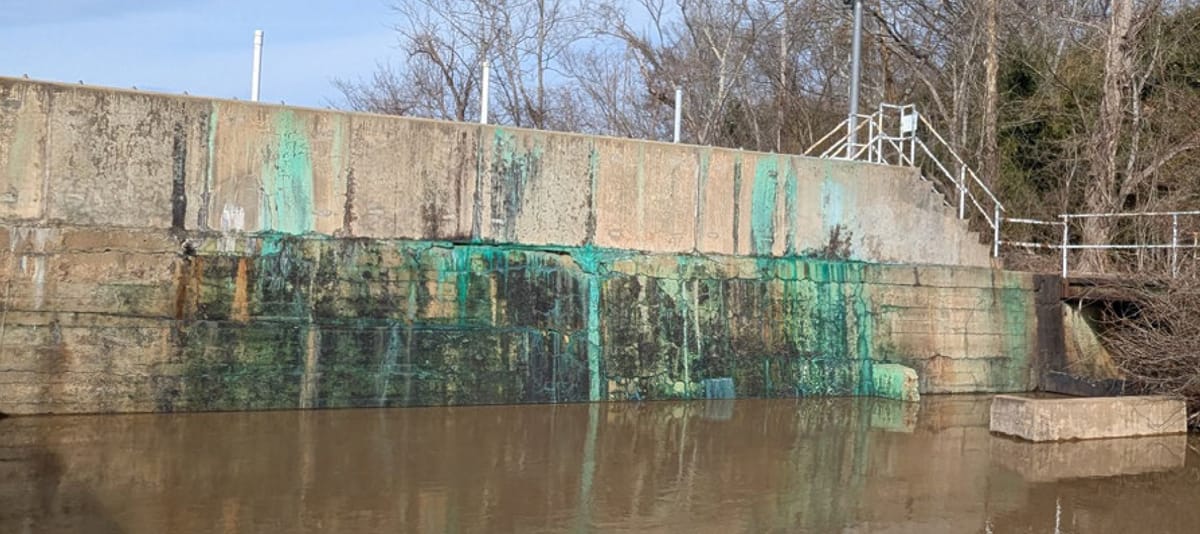
City says budget wasn’t relying on $12 million in federal funds for water plant repairs
Richmond’s utilities director says the city wasn’t relying on a potential $12 million federal grant to cover the cost of repairs related to its water treatment plant, although officials had hoped the money could have helped offset increases that will otherwise be borne by customers in the future.
On April 11, the federal government announced it was cancelling hundreds of millions of dollars in disaster mitigation grants for state and local governments. The funding pool — known as the Building Resilient Infrastructure and Communities, or BRIC, program — included $12 million that Richmond was hoping to receive for repairs to its water plant’s feeder channel, which funnels raw water from the James River to the plant for treatment.
The news sparked widespread concern among local officials and the public that the $12 million loss would blow a hole in the city’s already tight budget for the upcoming year.
Richmond, however, had never formally been promised the funding. A spokesperson for the Virginia Department of Emergency Management, which administers the BRIC program in Virginia, wrote in an email that Richmond’s application had been “selected for further review” but the funds “were not yet awarded.”
Department of Public Utilities Director Scott Morris told City Council earlier this month that water officials had not assumed Richmond would be getting the money when they prepared their projections of what water rates should be over the next year. Instead, the costs of the repairs have been budgeted through the regular five-year capital improvement plan process.
If the city had gotten the grant, the $12 million that the utility had assumed customers would pay would have been “repurposed to reduce the rate increase we would need in subsequent years,” Morris said. Without the grant, the costs of the work and financing could cause a roughly 1% rate increase sometime over the next five years.
Separately, DPU is asking for a 5.75% increase in water rates in the upcoming fiscal year.
The feeder channel project predates Richmond’s Jan. 6 water crisis, when a weather-related power outage and the failure of the facility’s backup systems caused catastrophic flooding and damage that cut off drinking water supplies for hundreds of thousands of residents of the region.
Rhonda Johnson, a spokesperson for DPU, said portions of the channel’s wall and berm “are too low or narrow to the point that overtopping may occur at high water levels.”
The repairs will include rehabilitation of deteriorated concrete, repair and replacement of the channel gates, removal of vegetative growth, the filling of cracks and other fixes to improve stability and reduce erosion in the event of flooding.
Johnson said the first phase of the work will focus on dredging and cleaning out the channel and is scheduled to begin this fall.
Contact Reporter Sarah Vogelsong at svogelsong@richmonder.org Reporter Graham Moomaw contributed to this story.






